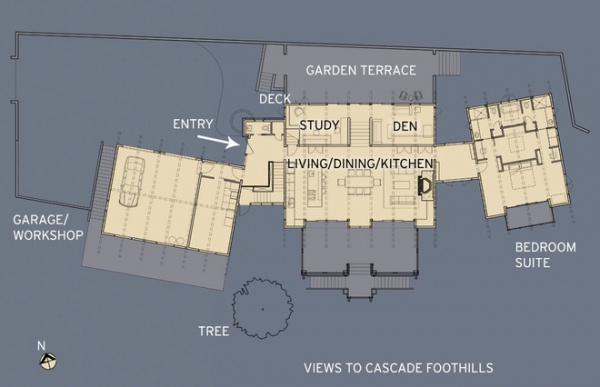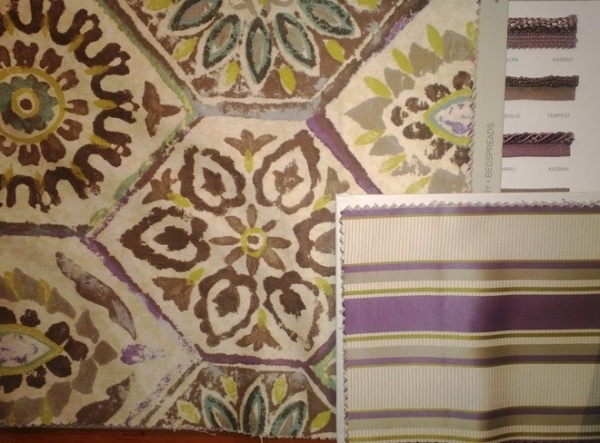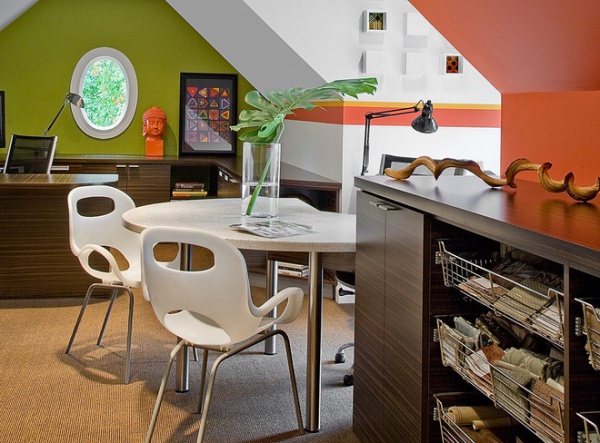Pro to Pro: Learn Your Client’s Thinking Style
http://decor-ideas.org 05/23/2014 20:14 Decor Ideas
When you’re an interior designer, it’s not enough to know your client’s tastes. You also have to understand how he or she thinks. Does this individual think from “the part to the whole” or from “the whole to the part”?
If you don’t understand what I mean, let me illustrate with a story.

A single man in his mid-30s asked me to decorate the interior of his new home, starting with the living room, family room and bedroom. He was one of those engineers who knew that his expertise — great as it was — did not extend to interior design.
Following my own advice, I listened carefully to him, writing down everything he said. Back at my office, I spent days putting together rooms that I knew satisfied all of his stated needs and desires.
When he came in for my presentation, I showed him the scaled floors plans …

… along with the paint colors and fabrics that I had chosen …

… and the pieces of furniture he would use. (I was going for exactly what he wanted: eclectic, warm and contemporary, with soft accents.) Because I was working in a furniture store, I had all the accessories — lamps, artwork, throws — set up in a room so he could instantly feel how the rooms would look. And throughout the process, I carefully repeated back to him the phrases he had used with me.
He was very quiet as he listened and looked, which was a bit disconcerting because I try to “close” the sale as I go, rather than wait for affirmation at the end. But when I finished, he rather abruptly said that he had to think it over, and walked out.
I was astounded and flummoxed. And peeved! After all, I had a 99 percent close rate on my presentations, and almost nobody left without buying at least a portion of what I presented.

I sulked and stewed for a few days. Then I dragged myself to a mandatory training session for the design staff. (I hated these. I wanted to be meeting new clients, not training!) I don’t remember who the leader was, but she spent the entire hour lecturing on the importance of finding your client’s thinking style, and thinking the same way.
She talked about how people tend to think in two fundamental ways: either from the part to the whole, or from the whole to the part. Like most interior designers, I tend to think from the whole to the part. We visualize an entire room finished, and then go about making it happen.
A light went off in my head. What if David (my engineer) thought from the part to the whole, rather than the other way around?
I couldn’t get back to my office fast enough. David answered on the first ring. “David,” I said, “I so much appreciate the opportunity you gave me to work on your home, but I don’t feel like I have served you very well. Would you please come in and give me another chance?” He said he would, and we set the date.

This time I did not set up a room for him to see. Instead, we sat at a small table. The only thing on that table was a tall stack of 8½-by-11 sheets of paper.

On the first sheet was a picture of the sofa I had chosen, with its dimensions and fabric. I showed him that. We went and comfort-tested the sofa. David liked it.
We went back to the table, where I turned that page upside down and selected the next page. It was a copy of the floor plan, but all that was on the floor plan was the sofa. “How do you feel about its placement in the room, David?” He liked it.
That sheet of paper also went upside down, on top of the picture of the sofa. (My table now had two stacks of paper: one for things we had looked at and agreed on, and one for still-to-be-presented items.)

The third sheet of paper had only one item on it: the coffee table I had selected. We went through the same process as the sofa, and David approved it.
On and on we went, piece by piece, step by step. Personally, I was dying of boredom. But David was liking this process, and better yet, he was signing off on each piece as we went. I thought the presentation would never end. But when it did, David wrote a check for everything I presented. When I walked him to the door, he turned to shake my hand, looked me straight in the eye, and said, “You were so much better prepared this time.”
Good thing there wasn’t an ax handy. But you know, he was right. All the hours and effort I had put into my first presentation were wasted time, because I wasn’t being careful to think the way David thought.
“A whole-to-part learner needs to understand the overarching concept before getting the details,” says Robert Keteyian, an interpersonal communication consultant. “Moving in the opposite direction (receiving the details first) leaves him confused and feeling adrift.
“Those who are part-to-whole learners need to take in the parts that lead to the whole concept they are learning. Being presented with a whole concept first leaves them overwhelmed, because the concept seems arbitrary.”

Great. So how are we supposed to discern which thinking style applies to a particular client?
If we are looking, he will give us clues. Does he ask us about the process? Does he demonstrate a need to be “walked through” what will happen? Does he pay attention to every detail — and maybe write it down? Does he seem hyper-organized? You can be pretty certain he is a part-to-whole thinker.
On the other hand, is he primarily interested in the bottom line? Does he seem uninterested in, or bogged down, by details? Is he a big-picture person? If so, he is your classic whole-to-part person.
If you are having trouble picking up on the clues, here is a sure-fire test: Ask the client how he reads books. Does he read slowly and carefully without ever skipping a paragraph? He is a part to whole. On the other hand, if (like me) he reads the last page first, you can be sure he is a whole-to-part thinker.

Bringing our client’s hopes and dreams to fruition is what designers are all about. But, like anything worthwhile, it can be a lot of work. Discerning between these two thinking styles will help ensure that all that work is not wasted.
Next: Another critical aspect of serving our clients well — not taking ourselves too seriously.
More: Pro-to-Pro: Sales Secrets for Design Professionals
Related Articles Recommended












